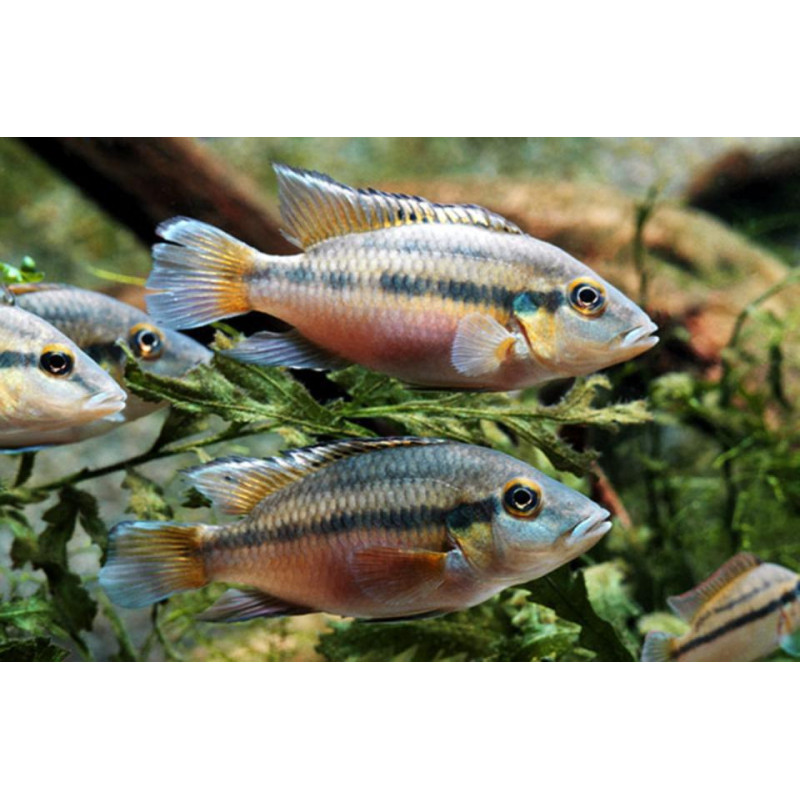More info
Common Name: Günther's Mouthbrooder
Order: Perciformes — Family: Cichlidae (Cichlids)
Distribution: Described from Assinie-Mafia in southeastern Côte d’Ivoire (Ivory Coast), western Africa, but is widely distributed across coastal river drainages of central western Africa. Found from the Saint John River in central Liberia to the Cross River drainage in southeastern Nigeria and southwestern Cameroon. Also present in the Niger River and its major tributary, the Benue, with records from Benin, Burkina Faso, Cameroon, Côte d’Ivoire, Equatorial Guinea, Ghana, Guinea, Liberia, Mali, Niger, Nigeria, and Togo.
A possible subspecies, C. g. loennbergi, is endemic to Lake Barombi-ba-Kotto in southwestern Cameroon and nearby waters, currently classified as ‘Critically Endangered‘ by the IUCN due to its restricted range and environmental threats.
Habitat:
Primarily inhabits lowland environments such as coastal floodplains, savannahs, and forested regions. Prefers calmer waters with submerged cover like tree roots and fallen branches.
Maximum Standard Length:
15 cm (5.9 inches)
Minimum Aquarium Size:
120 × 30 cm (48 × 12 inches) for a single pair. A filtration system with a flow rate of 4-5 times the aquarium volume is recommended.
Maintenance:
A soft, sandy substrate is ideal to support the fish’s natural browsing behavior. The tank should have dim lighting, driftwood, roots, and water-worn rocks for potential spawning sites. High water quality is essential, requiring efficient filtration and weekly water changes of 30-50%.
Water Conditions:
Temperature: 24 – 27 °C (75 – 81 °F)
pH: 6.0 – 8.0
Hardness: 18 – 268 ppm
Diet:
A benthophagous omnivore, feeding on small invertebrates, algae, organic detritus, and shrimp eggs. Uses a browsing behavior similar to Geophagus and Satanoperca, sifting substrate for food.
In captivity, it should be given sinking foods rich in vegetable matter, such as Spirulina-based pellets, along with occasional live or frozen foods like bloodworms, Daphnia, and Artemia.
Behavior & Compatibility:
Generally peaceful and can be kept in a community tank with properly chosen tankmates. Ideal companions include peaceful, pelagic characins and cyprinids. Other cichlids may be kept if they do not compete aggressively for territory or food.
For breeding, it is best kept alone or with small, non-predatory dither fish. Pairs become highly territorial.
Sexual Dimorphism:
Males grow larger, and their first pectoral fin ray is more extended than in females. During spawning, females develop a reddish-pink abdomen and a more pronounced whitish band on the upper dorsal fin.
Reproduction:
Biparental, paternal, ovophilic mouthbrooder. After fertilization, the male collects all the eggs in his mouth and is solely responsible for incubation, while the female defends the territory. The incubation period is 10-14 days, after which fry can eat Artemia nauplii. Fry continue receiving parental care for at least two more weeks and may take refuge in the parents’ mouths when threatened.
Foto ilustrativa. | Illustrative photo.


